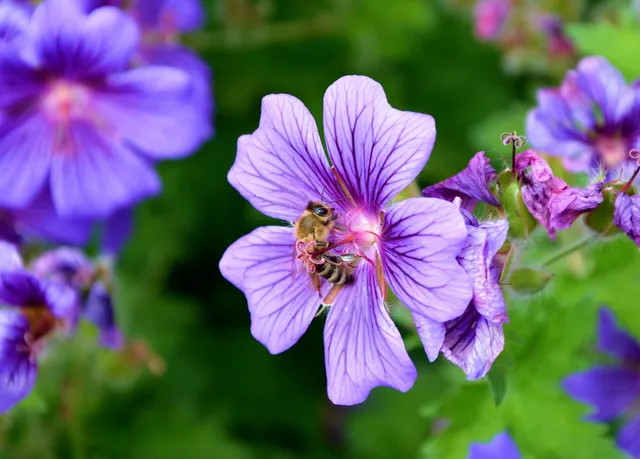The Buzz on Pollinators

Everyone is buzzing about pollinators lately, and with good reason. They are very important, and their numbers are declining. Pollinators are creatures such as bees, butterflies, hummingbirds, and others which move from plant to plant searching for pollen or nectar to eat. As they go, they are dusted by pollen and move it to the next flower, fertilizing the plant.
Plants need pollinators to survive, and we need plants. Plants feed animals of all sorts, including us. They also purify water, prevent erosion, and make the oxygen we breathe. Without pollinators we are all in a lot of trouble! That is why we need to help them survive. We can do that by attracting pollinators to our gardens. How?
1. Plant a wide variety of plants that pollinators like. Different pollinators like different plants, so growing plants with a wide variety of shapes, colors, and bloom times is best. Think of your garden as a pollinator buffet! Native plants (those that grow locally in the wild) and heirloom plants (those grown with seeds that have not been hybridized or modified for generations) are best, but many hybridized varieties are great, too.
2. Plant in drifts or clumps. It is easier for pollinators to find a group of the same type of plants than a single plant, so planting 3 or 5 or 17 of something instead of just one is helpful.
3. Provide a good environment for pollinators. Grow host plants (plants certain pollinators live on or eat). Give them a water source, a hummingbird feeder, and shelter such as a small pile of stems or branches, a “bee hotel”, or nearby shrubs.
4. Skip the chemicals. Chemical pesticides and fertilizers harm pollinators, and we simply cannot afford to keep losing them. There are many non-toxic garden products on the market today. You will be pleasantly surprised by how effective they can be.
5. Start small. It does not need to be complicated. If you do not have the space or time for a big garden, do not worry. Even a couple of planters or hanging baskets can make a difference.
To see a list of pollinator friendly plants for your garden, click on the link below.
